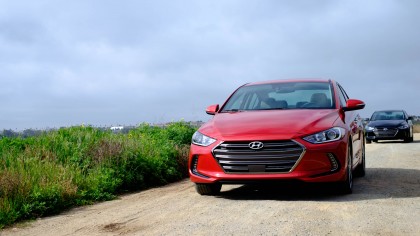Why you can trust TechRadar
Opting for the $2,500 tech package also gets you an Infinity-branded, eight-speaker premium sound system. The eight speakers are arranged in a six channel configuration, with separate 1-inch tweeters and 6.5-inch mid-woofers in the front doors, 6.5-inch full range speakers in the rear door, a 3.14-inch midrange center speaker and an 8-inch subwoofer in the rear deck.
A seven-channel amplifier delivering 45 Watts (W) per channel powers the entire system. The front doors, rear doors and center speakers each use a channel while the dual voice coil subwoofer receives twice the power. Harman Clari-Fi sound processing technology rounds out the Infinity premium sound system to reconstruct lost audio data from low quality sources in real-time for more CD-like sound.

The result is a sound system that produces balanced sound with clear high-range and neutral midrange. Clari-Fi technology makes low bitrate SiriusXM a lot more tolerable, too. It still doesn't match a high-bitrate MP3 or CD, but it adds more depth for slightly richer sound.
As with most premium sound systems, the subwoofer is the weakest link in the Elantra's Infinity sound system. The 95W subwoofer just doesn't produce enough bass for my tastes. However, since the high and mid-range sounds good, adding a separate subwoofer, like an Infinity BassLink, shouldn't be too hard.
Blue Link
Hyundai Blue Link is standard on the Elantra Limited. The telematics system lets you remote start, lock, unlock, track the car location and make use of other features using a smartphone and wearable app, or through a web portal.
I didn't get a chance to play with Blue Link in the Elantra, but covered it extensively in the Hyundai Tucson review.

The Verizon-based telematics system can be useful in cold climates where you need remote start, but I don't use any of the features. The ability to control the car from a smartphone or smartwatch is entertaining at first, and can impress friends and family, but the novelty wears off quickly and doesn't justify the subscription cost, at least for me.
Driver assists
Check off the Ultimate package to get everything and the kitchen sink on the new Elantra. The Ultimate package adds a full suite of driver assists, which includes automatic emergency braking (AEB), pedestrian detection, adaptive cruise control, lane departure warning (LDW) and lane keep assist (LKAS). The blind spot monitor is standard on the Limited trim level.
Hyundai's AEB system relies on a camera and radar sensor, and it can apply full braking power at speeds from 5 to 50 miles per hour (mph). Meanwhile, the pedestrian detection function automatically applies the brakes at speeds of 5 to 43 mph.
I didn't mean to trigger the AEB system, but traffic came to a complete stop on an open highway during my drive, triggering the forward collision warning before I stepped on the brakes. The system then provided stopping power before I could slam on the brakes.
I couldn't find another auto journalist or Hyundai representative to run in front of the car while I drove 40 mph to test out the pedestrian detection feature, unfortunately.
The LKAS in the Elantra caught me by surprise. You can adjust the sensitivity of the system via the LCD display in the gauge cluster. I set it to active and enabled the LDW and LKAS via a button to the left of the steering wheel. I expected the LKAS to be a simple system that only bounces the car back and forth between the lane, but it's an active system that provides steering assist, which was a surprise.

A small indicator in the gauge cluster lights up green when LKAS is active and able to read the lane markers – it turned on and off intermittently during my drive, according to the indicator. It works great when it's active, but I wouldn't trust it for semi-autonomous driving.
ACC in the Elantra leaves me conflicted, because it's not a full-speed range system that can stop and hold the car for you. However, it doesn't cancel out until you get below 5 mph, which is a lot more usable in traffic than ACC that only operates at speeds above 19 mph. The only compact car that has a full-speed range ACC system – that I can think of – is the 2016 Honda Civic, so the Elantra's ACC isn't too bad.
Hyundai's implementation lets you choose between three levels of acceleration. I set it to fast and found the acceleration conservative, but braking was smooth and comfortable.
Lastly, the Elantra Limited comes standard with a radar-based blind spot monitor. The system works and provides visual indicators in each side mirror and an audible warning inside. It's a standard system that works.
Current page: Infinity sound, Blue Link and driver assists
Prev Page Design, interior and infotainment Next Page Performance, Eco and Sport trims